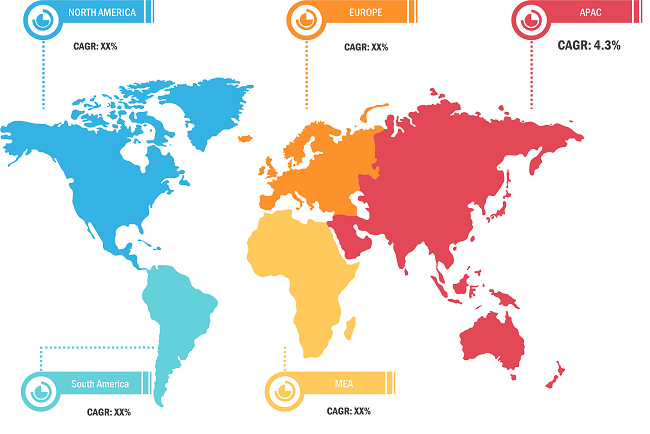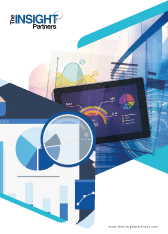The global virtual pipeline systems market was valued US$ 1,191.59 million in 2022, it is estimated to grow at a CAGR of 9.2% from 2022 to 2028.
The increase in energy demand is a key factor driving the market. In recent times, natural gas has gained prominence as it burns cleaner than conventional fossil fuels such as coal, gasoline, and diesel. The world is facing serious repercussions of global warming, which is compelling a shift toward cleaner energy sources and natural gas. Virtual pipelines allow natural gas companies to extend their reach beyond their local market, thereby allowing them to expand their footprint. Virtual pipelines are designed for the land transport of gas shipments in containers by rail or road; they can also be transported on the water in coastal tankers and river ships. These systems can be employed to supply natural gas to power plants and private customers who cannot participate in pipeline development due to geological constraints.
According to the latest edition of the IEA's semiannual report on electricity markets, the global energy demand increased by ~5% in 2021 after a drop of 1% in 2020 as an impact of the COVID-19 pandemic. The demand is expected to grow by 4% in 2022, mainly due to a recovering global economy, with Asia Pacific leading the way. According to a report by the International Energy Agency, electricity demand in the Asia Pacific region grew by 8% in 2021, compared with a low of 2% in 2020. China and India mainly drive this growth, and both registered a significant increase in electricity demand. . Except for Japan, most countries in the region are expected to continue to grow in demand for energy through 2024. Thus, the rising energy demands further augment the need for virtual pipeline systems, driving the market over the forecast period.
The virtual pipeline systems market study primarily focuses on two segments—type, gas, pressure rating, and application. Based on the type segment, the virtual pipeline systems market is subsegmented into standard trailer and towable trailer. Based on gas, the virtual pipeline systems market is further segmented into CNG, hydrogen, and others. The pressure rating segment is subsegmented into less than 3000 Psi, 3001 Psi to 5000 Psi, and more than 5000 Psi. The application segment is further segmented into industrial, transportation, commercial, and residential. By geography, the virtual pipeline systems market is segmented into North America, Europe, Asia Pacific, Middle East & Africa, and South America.
Customize Research To Suit Your Requirement
We can optimize and tailor the analysis and scope which is unmet through our standard offerings. This flexibility will help you gain the exact information needed for your business planning and decision making.
Virtual Pipeline Systems Market: Strategic Insights

Market Size Value in US$ 1,191.59 Million in 2022 Market Size Value by US$ 1,886.83 Million by 2028 Growth rate CAGR of 9.2% from 2022 to 2028 Forecast Period 2022-2028 Base Year 2022

Naveen
Have a question?
Naveen will walk you through a 15-minute call to present the report’s content and answer all queries if you have any.
 Speak to Analyst
Speak to Analyst
Customize Research To Suit Your Requirement
We can optimize and tailor the analysis and scope which is unmet through our standard offerings. This flexibility will help you gain the exact information needed for your business planning and decision making.
Virtual Pipeline Systems Market: Strategic Insights

| Market Size Value in | US$ 1,191.59 Million in 2022 |
| Market Size Value by | US$ 1,886.83 Million by 2028 |
| Growth rate | CAGR of 9.2% from 2022 to 2028 |
| Forecast Period | 2022-2028 |
| Base Year | 2022 |

Naveen
Have a question?
Naveen will walk you through a 15-minute call to present the report’s content and answer all queries if you have any.
 Speak to Analyst
Speak to Analyst
Impact of COVID-19 Pandemic on Virtual Pipeline Systems Market
COVID-19 pandemic negatively affected the global virtual pipeline systems market. The COVID-19 outbreak impacted oil & gas and energy development in Asian countries such as India and China. China is one of the biggest importers of compressed natural gas and other gases. China witnessed the lowest gas consumption rate due to high import prices, slowing economic growth, mainly hampered because of COVID-19 lockdowns. With gas supply growth harder hit by the impact of COVID-19, buyers will have to increasingly look to existing CNG and LNG supply to secure future long-term deliveries. Less LNG will be available for short-term and spot purchases when more countries wish to increase imports.
Lucrative Regions for Virtual Pipeline Systems Market
- Sample PDF showcases the content structure and the nature of the information with qualitative and quantitative analysis.
Market Insights – Virtual Pipeline Systems Market
Rising Shale Gas Extraction
Continuous advancements in shale drilling technologies have made shales the next reliable energy resource. Shale gas can be utilized as a greener energy option in countries that are dependent on coal as an energy source, as it emits less carbon than coal. Shale gas production has resulted in the abundance of natural gas supply worldwide. According to the Energy Information Administration (EIA), the unproven, theoretically recoverable shale gas potential of the US is estimated to be 482 trillion cubic feet. Shale gas output in the country surged 12 folds in the previous decade, and the growth is likely to continue until 2035, which would continue to favor the growth of virtual pipeline vendors. Further, several governments worldwide are collaborating with new smaller agencies for gas transportation. In October 2018, the Nigerian National Petroleum Corporation awarded a contract to a private company (undisclosed) to build a virtual pipeline system. The project is designed to deliver ~84 million standard cubic feet of gas per day (mmscf/d).
Type
-Based Insights
Based on type, the virtual pipeline systems market is segmented into standard trailer and towable trailer. The standard trailer segment accounted for a larger virtual pipeline systems market share in 2021, owing to the growing demand from various industries, including industrial and transportation.
Gas-Based Insights
Based on gas, the virtual pipeline systems market is segmented into CNG, hydrogen, and others. The CNG segment accounted for the largest market share in 2021 due to the growing demand from various industries, including commercial & residential and transportation.
Pressure Rating-Based Insights
Based on pressure rating, the virtual pipeline systems market is segmented into less than 3000 Psi, 3000 Psi to 5000 Psi, and more than 5000 Psi. The 3001 psi to 5000 Psi segment accounted for the largest market share in 2021 due to the growing demand from medium-sized firms for CNG pipeline systems.
Application-Based Insights
Based on application, the virtual pipeline systems market is segmented into industrial, transportation, and commercial & residential. The transportation segment accounted for the largest virtual pipeline systems market share in 2021.
Players operating in the virtual pipeline systems market are mainly focused on the development of advanced and efficient products.
- In 2022, H&P made a cornerstone investment of US$ 33 million into Galileo Technologies, supporting Galileo's unique technology platform focused on decarbonizing the energy supply chain. The companies also plan to identify and pursue business development opportunities that, if successful, have the potential to reduce fuel costs and carbon emissions from power consumption on well-sites.
- In 2022, Chevron—one of the top integrated energy corporations in the world—placed an order for four HyFillTM hydrogen transport trailers with BayoTech, a pioneer in hydrogen solutions. Chevron will distribute high-pressure gaseous hydrogen for industrial, transportation, and power production uses in the Western US using BayoTech's transport trailers.
List of Companies:
- Bayotech, Inc.
- CNG Services Ltd
- Petroliam Nasional Berhad (PETRONAS)
- RAG Austria AG
- Quantum Fuel Systems LLC
- Galileo Technologies S.A.
- Chart Industries, Inc.
- SHIJIAZHUANG ENRIC GAS EQUIPMENT CO., LTD
- Fiba Technologies Inc
- Hexagon Agility
- Composite Advanced Technologies, LLC

Report Coverage
Revenue forecast, Company Analysis, Industry landscape, Growth factors, and Trends

Segment Covered
Type, Gas, Pressure Rating, and Application

Regional Scope
North America, Europe, Asia Pacific, Middle East & Africa, South & Central America

Country Scope
Argentina, Australia, Brazil, Canada, China, France, Germany, India, Italy, Japan, Mexico, Russian Federation, Saudi Arabia, South Africa, South Korea, United Arab Emirates, United Kingdom, United States
Frequently Asked Questions
The global virtual pipeline systems market is expected to grow at US$ 1,191.59 million in 2022.
Increasing Energy Demands Creating Need for Virtual Pipeline Systems.
Growing Investment in VPS Technologies
The top five key players operating in the global Virtual pipeline systems market include Galileo Technologies S.A., Bayotech, Inc., Petroliam Nasional Berhad (PETRONAS), RAG Austria AG, Quantum Fuel Systems LLC.
US, Germany, China, and Brazil are among the other countries expected to register highest CAGR growth rate.
China is one of the leading country dominating the market in 2022.
The List of Companies - Virtual Pipeline Companies
- Galileo Technologies S.A.
- Bayotech, Inc.
- Petroliam Nasional Berhad (PETRONAS)
- RAG Austria AG
- Quantum Fuel Systems LLC.
- Chart Industries, Inc.
- SHIJIAZHUANG ENRIC GAS EQUIPMENT CO., LTD.
- Fiba Technologies Inc
- Hexagon Agility
- Composite Advanced Technologies, LLC
The Insight Partners performs research in 4 major stages: Data Collection & Secondary Research, Primary Research, Data Analysis and Data Triangulation & Final Review.
- Data Collection and Secondary Research:
As a market research and consulting firm operating from a decade, we have published many reports and advised several clients across the globe. First step for any study will start with an assessment of currently available data and insights from existing reports. Further, historical and current market information is collected from Investor Presentations, Annual Reports, SEC Filings, etc., and other information related to company’s performance and market positioning are gathered from Paid Databases (Factiva, Hoovers, and Reuters) and various other publications available in public domain.
Several associations trade associates, technical forums, institutes, societies and organizations are accessed to gain technical as well as market related insights through their publications such as research papers, blogs and press releases related to the studies are referred to get cues about the market. Further, white papers, journals, magazines, and other news articles published in the last 3 years are scrutinized and analyzed to understand the current market trends.
- Primary Research:
The primarily interview analysis comprise of data obtained from industry participants interview and answers to survey questions gathered by in-house primary team.
For primary research, interviews are conducted with industry experts/CEOs/Marketing Managers/Sales Managers/VPs/Subject Matter Experts from both demand and supply side to get a 360-degree view of the market. The primary team conducts several interviews based on the complexity of the markets to understand the various market trends and dynamics which makes research more credible and precise.
A typical research interview fulfils the following functions:
- Provides first-hand information on the market size, market trends, growth trends, competitive landscape, and outlook
- Validates and strengthens in-house secondary research findings
- Develops the analysis team’s expertise and market understanding
Primary research involves email interactions and telephone interviews for each market, category, segment, and sub-segment across geographies. The participants who typically take part in such a process include, but are not limited to:
- Industry participants: VPs, business development managers, market intelligence managers and national sales managers
- Outside experts: Valuation experts, research analysts and key opinion leaders specializing in the electronics and semiconductor industry.
Below is the breakup of our primary respondents by company, designation, and region:

Once we receive the confirmation from primary research sources or primary respondents, we finalize the base year market estimation and forecast the data as per the macroeconomic and microeconomic factors assessed during data collection.
- Data Analysis:
Once data is validated through both secondary as well as primary respondents, we finalize the market estimations by hypothesis formulation and factor analysis at regional and country level.
- 3.1 Macro-Economic Factor Analysis:
We analyse macroeconomic indicators such the gross domestic product (GDP), increase in the demand for goods and services across industries, technological advancement, regional economic growth, governmental policies, the influence of COVID-19, PEST analysis, and other aspects. This analysis aids in setting benchmarks for various nations/regions and approximating market splits. Additionally, the general trend of the aforementioned components aid in determining the market's development possibilities.
- 3.2 Country Level Data:
Various factors that are especially aligned to the country are taken into account to determine the market size for a certain area and country, including the presence of vendors, such as headquarters and offices, the country's GDP, demand patterns, and industry growth. To comprehend the market dynamics for the nation, a number of growth variables, inhibitors, application areas, and current market trends are researched. The aforementioned elements aid in determining the country's overall market's growth potential.
- 3.3 Company Profile:
The “Table of Contents” is formulated by listing and analyzing more than 25 - 30 companies operating in the market ecosystem across geographies. However, we profile only 10 companies as a standard practice in our syndicate reports. These 10 companies comprise leading, emerging, and regional players. Nonetheless, our analysis is not restricted to the 10 listed companies, we also analyze other companies present in the market to develop a holistic view and understand the prevailing trends. The “Company Profiles” section in the report covers key facts, business description, products & services, financial information, SWOT analysis, and key developments. The financial information presented is extracted from the annual reports and official documents of the publicly listed companies. Upon collecting the information for the sections of respective companies, we verify them via various primary sources and then compile the data in respective company profiles. The company level information helps us in deriving the base number as well as in forecasting the market size.
- 3.4 Developing Base Number:
Aggregation of sales statistics (2020-2022) and macro-economic factor, and other secondary and primary research insights are utilized to arrive at base number and related market shares for 2022. The data gaps are identified in this step and relevant market data is analyzed, collected from paid primary interviews or databases. On finalizing the base year market size, forecasts are developed on the basis of macro-economic, industry and market growth factors and company level analysis.
- Data Triangulation and Final Review:
The market findings and base year market size calculations are validated from supply as well as demand side. Demand side validations are based on macro-economic factor analysis and benchmarks for respective regions and countries. In case of supply side validations, revenues of major companies are estimated (in case not available) based on industry benchmark, approximate number of employees, product portfolio, and primary interviews revenues are gathered. Further revenue from target product/service segment is assessed to avoid overshooting of market statistics. In case of heavy deviations between supply and demand side values, all thes steps are repeated to achieve synchronization.
We follow an iterative model, wherein we share our research findings with Subject Matter Experts (SME’s) and Key Opinion Leaders (KOLs) until consensus view of the market is not formulated – this model negates any drastic deviation in the opinions of experts. Only validated and universally acceptable research findings are quoted in our reports.
We have important check points that we use to validate our research findings – which we call – data triangulation, where we validate the information, we generate from secondary sources with primary interviews and then we re-validate with our internal data bases and Subject matter experts. This comprehensive model enables us to deliver high quality, reliable data in shortest possible time.
Trends and growth analysis reports related to Virtual Pipeline Systems Market

Oct 2022
Offshore Oil and Gas Pipes, Fittings, and Flanges Market
Size and Forecasts (2020 - 2030), Global and Regional Share, Trends, and Growth Opportunity Analysis Report Coverage: By Product Type (Pipes, Fittings, and Flanges), Material Type (Steel, Alloy Steel, Nickel Alloy, and Copper Alloy), and Geography

Oct 2022
Spent Nuclear Fuel Waste Management Market
Size and Forecasts (2020 - 2030), Global and Regional Share, Trends, and Growth Opportunity Analysis Report Coverage: By Reactor Type (Pressurized Water Reactor, Boiling Water Reactor, Gas-Cooled Reactor, and Others); Disposal Type (Near Surface Disposal and Deep Surface Disposal); and Geography

Oct 2022
Gas Pipeline Infrastructure Market
Size and Forecast (2020 - 2030), Global and Regional Share, Trend, and Growth Opportunity Analysis Report Coverage: By Operation (Transmission and Distribution), Equipment (Pipeline, Compressor Station, Metering Skids, and Others), and Application (Onshore and Offshore)